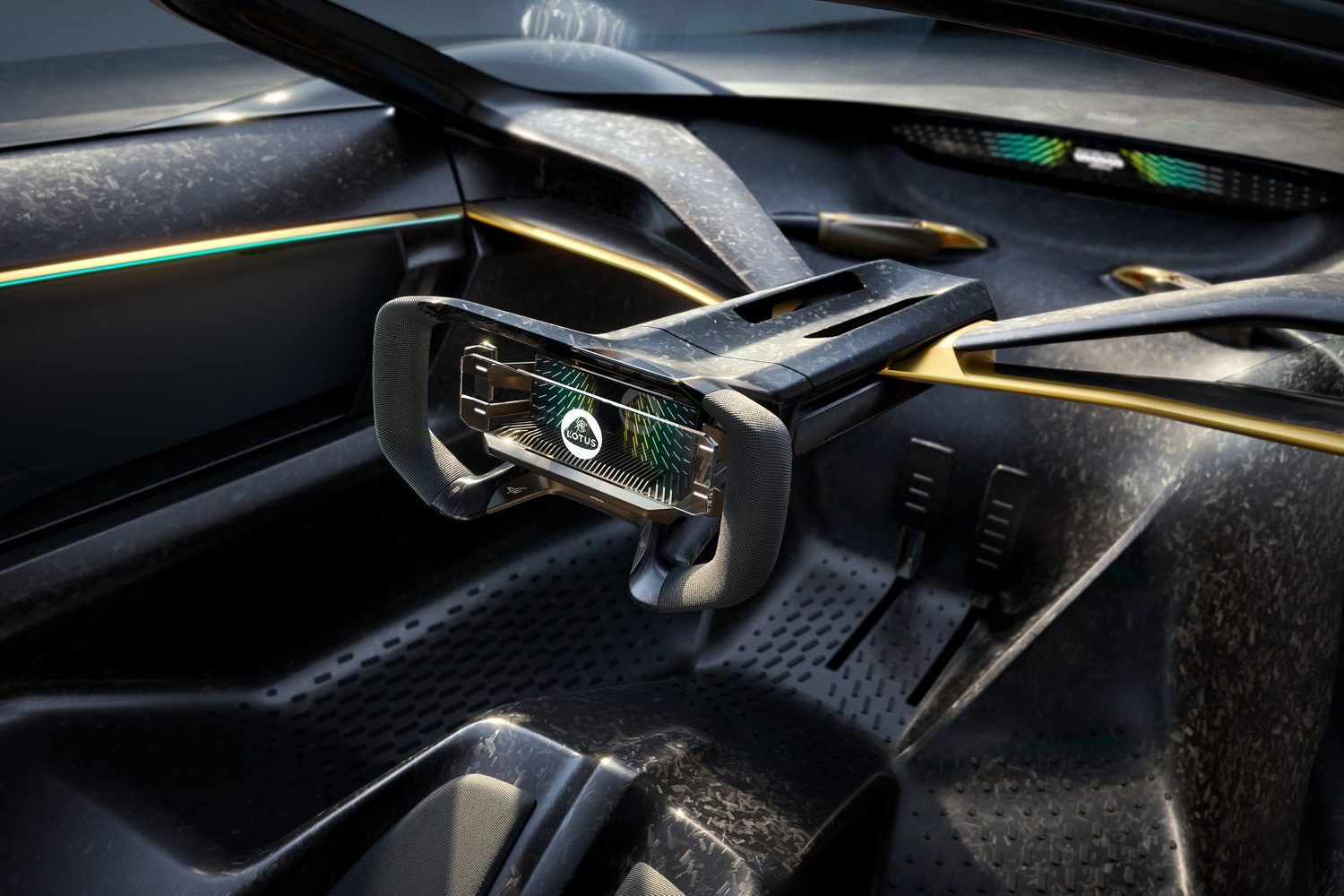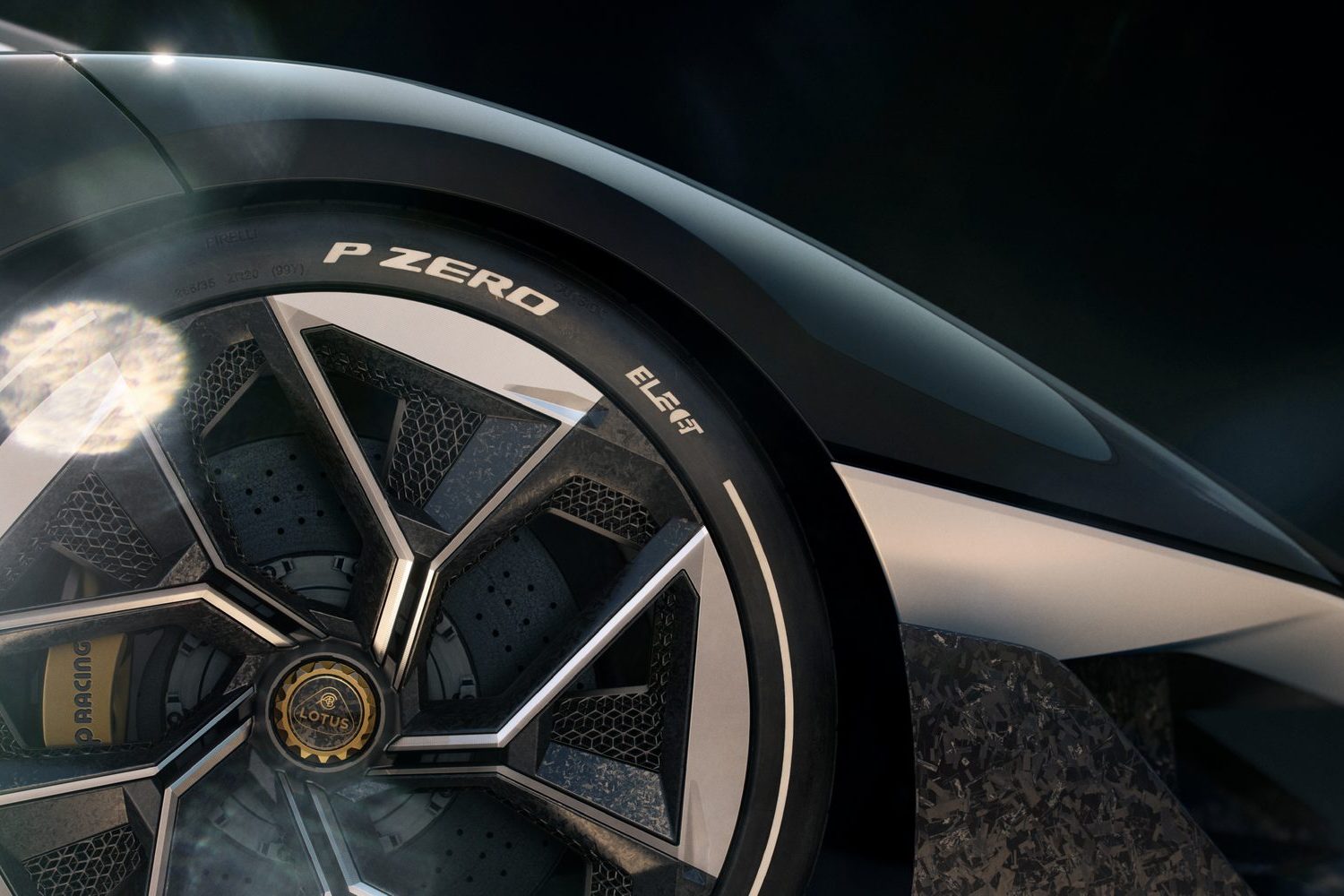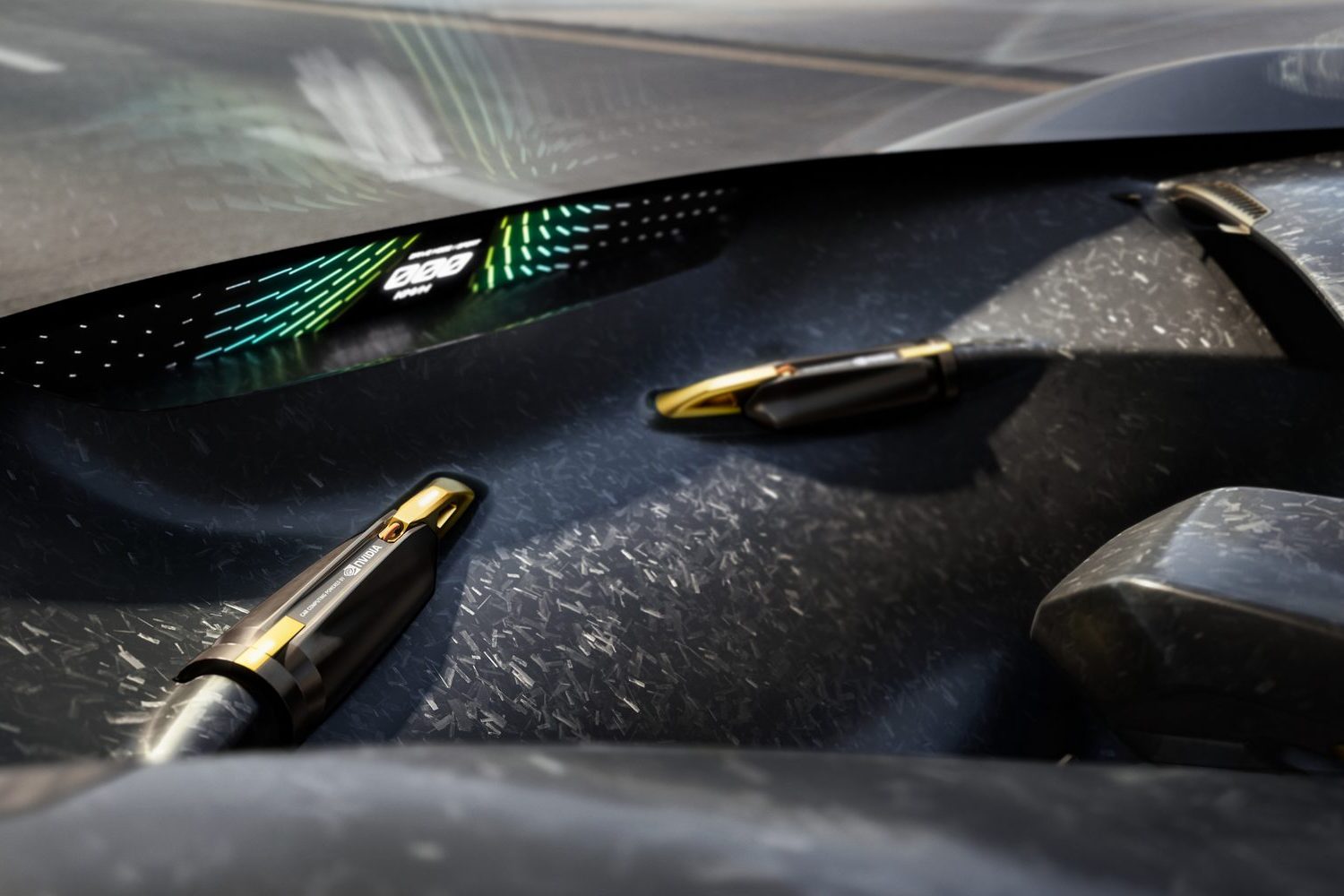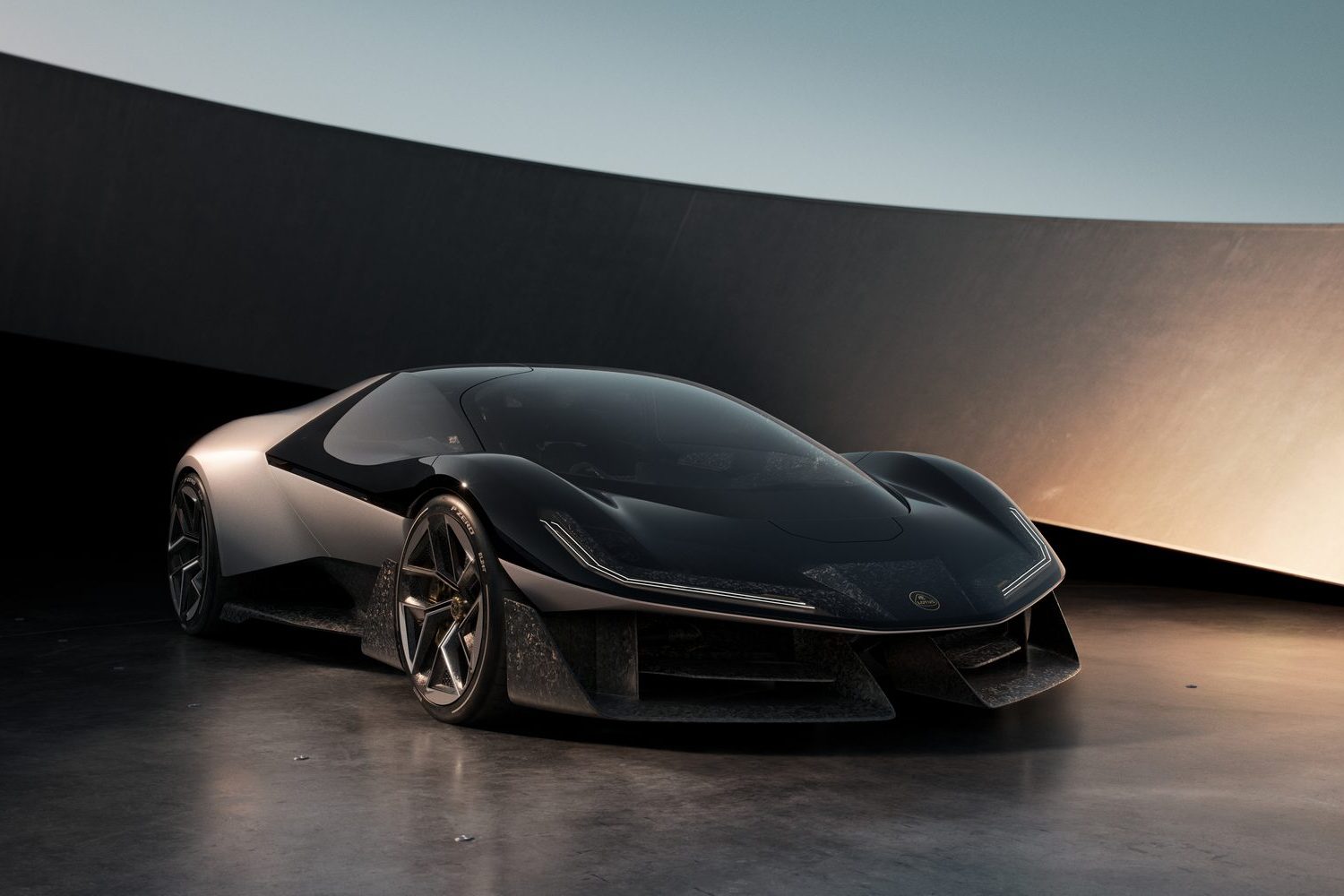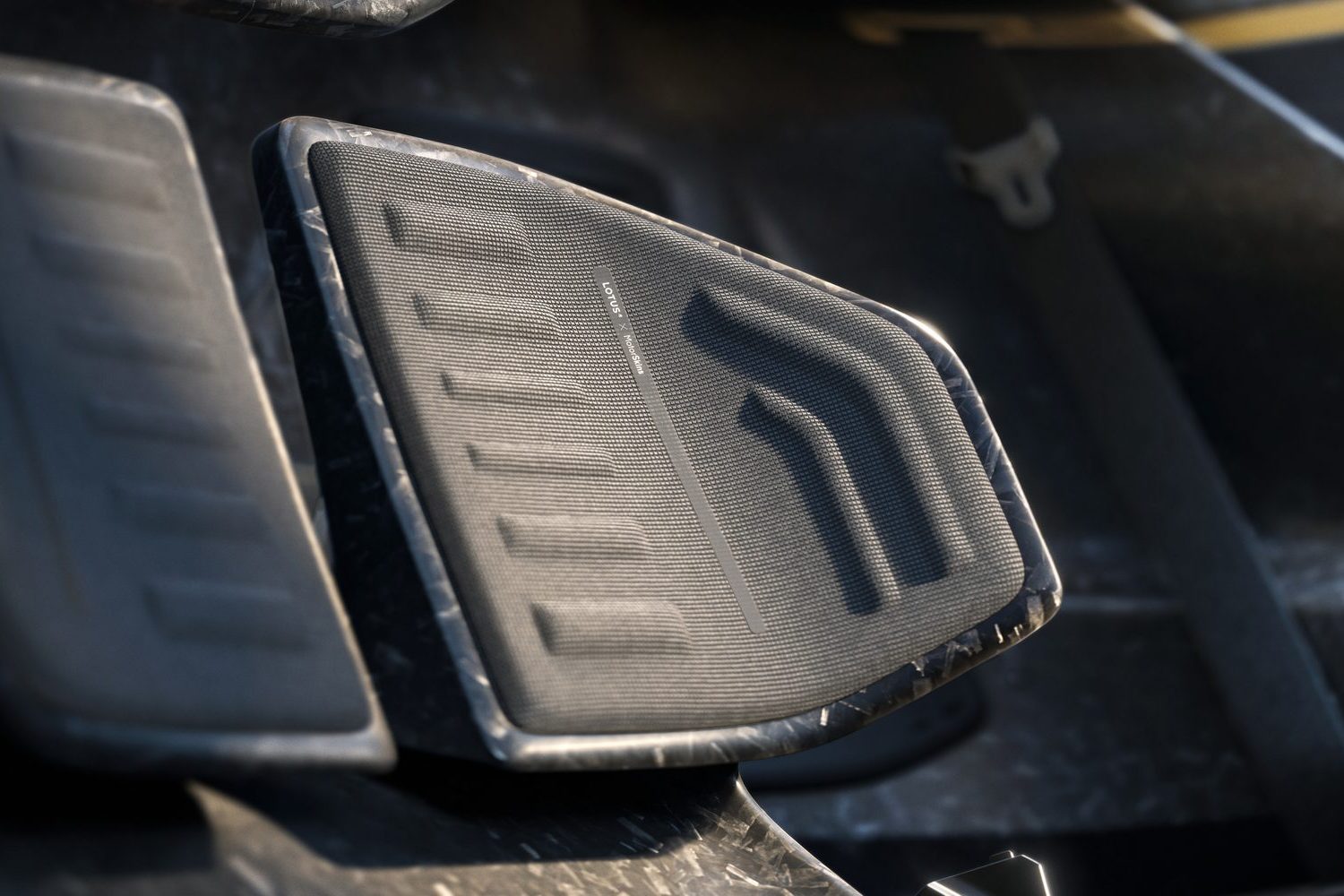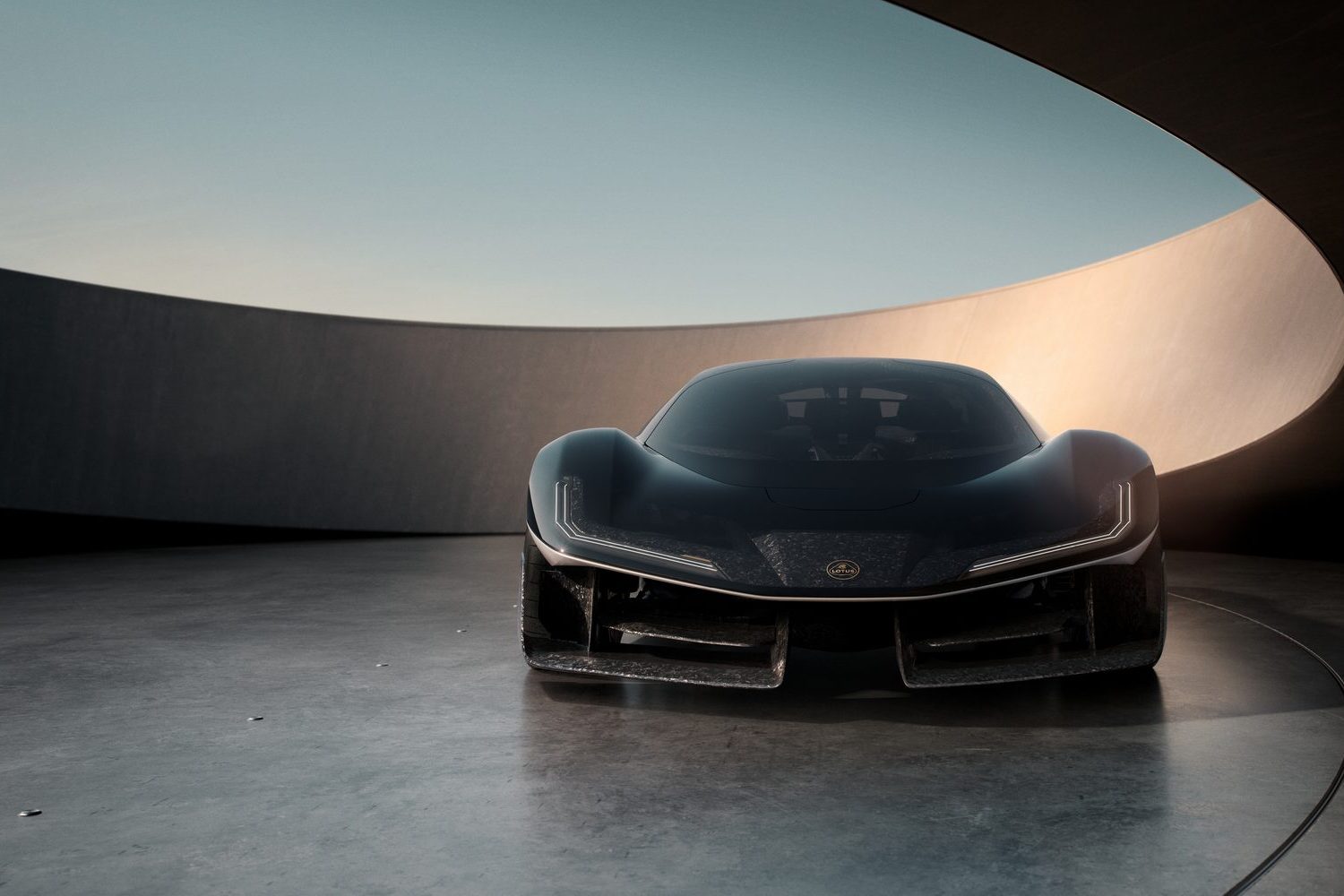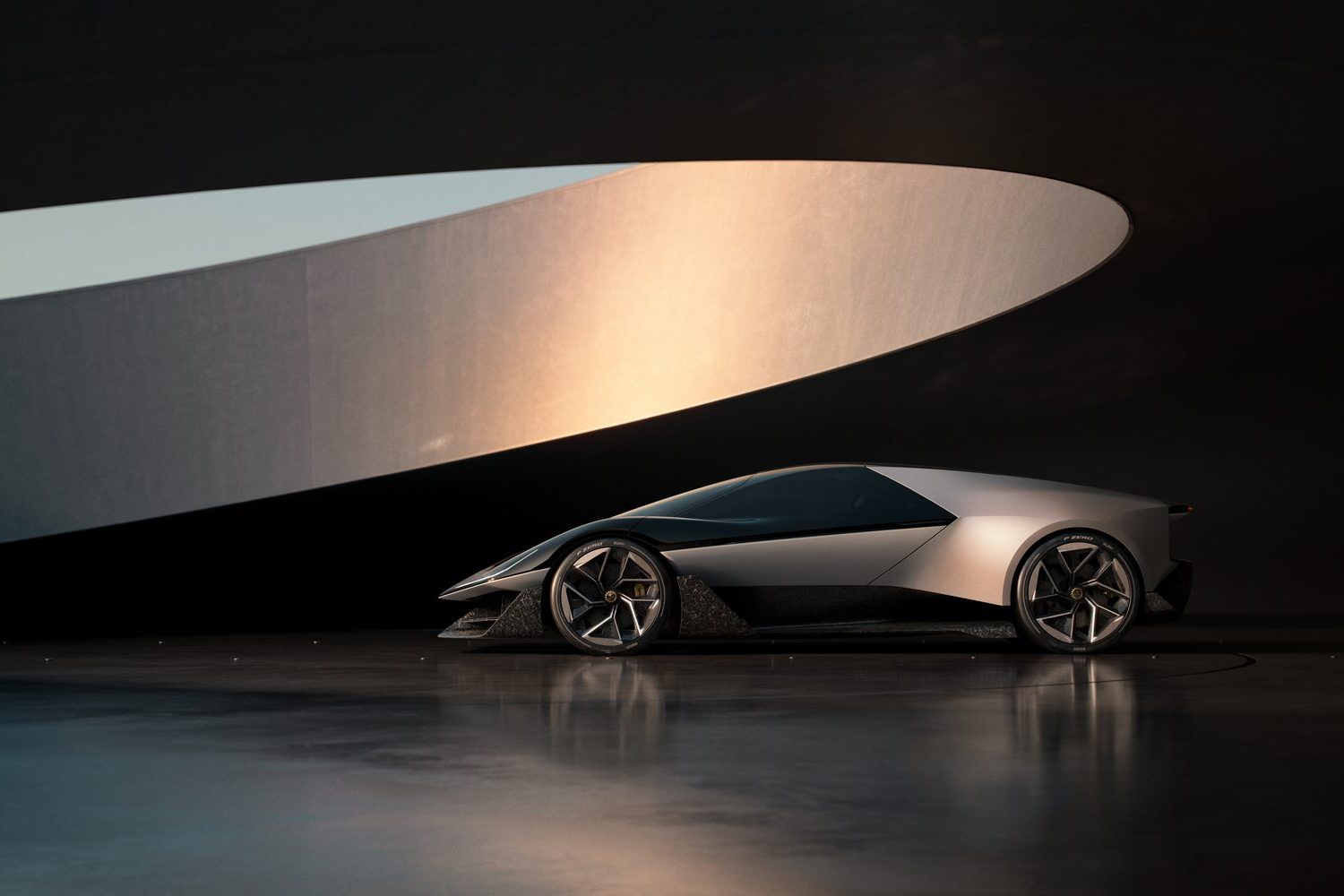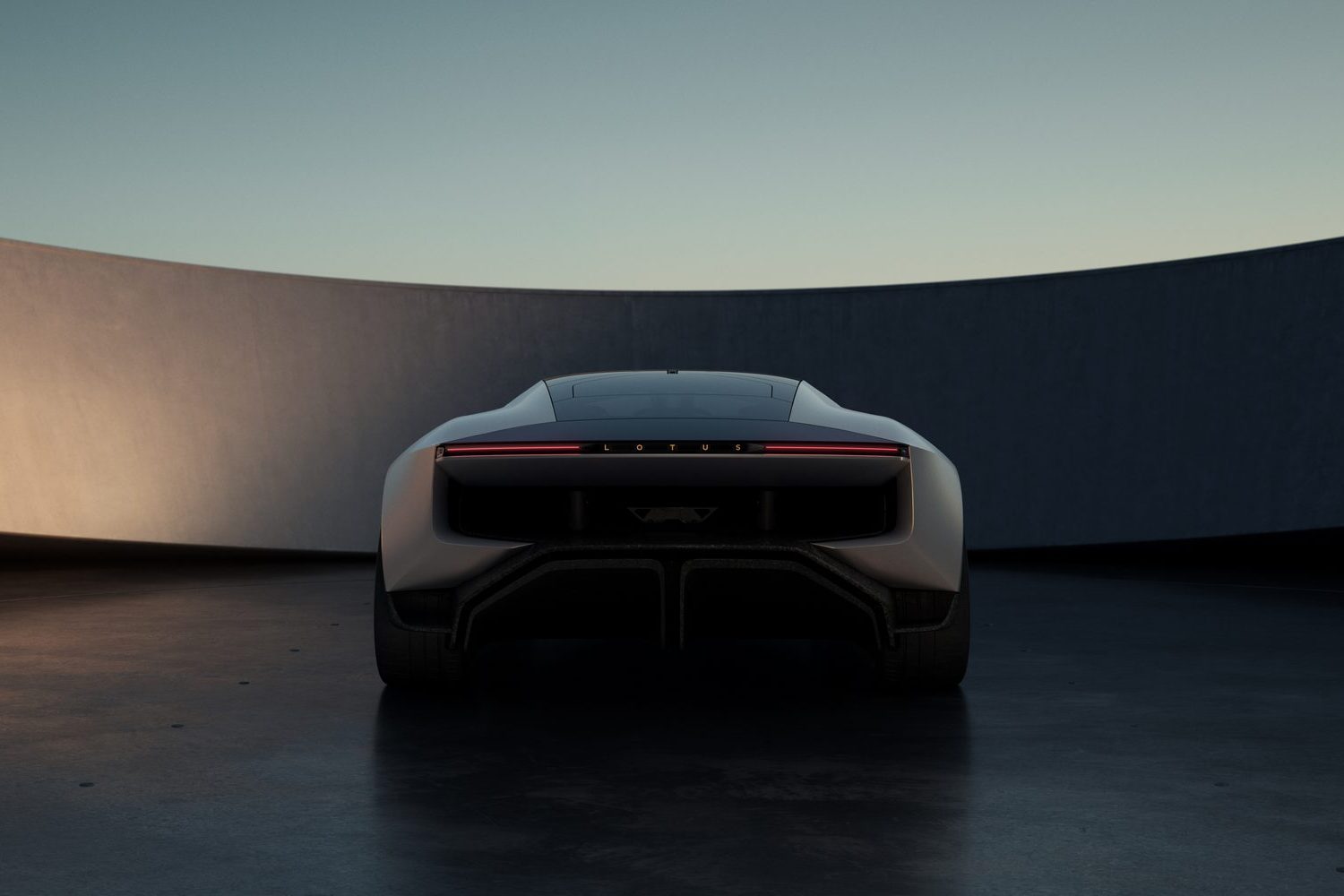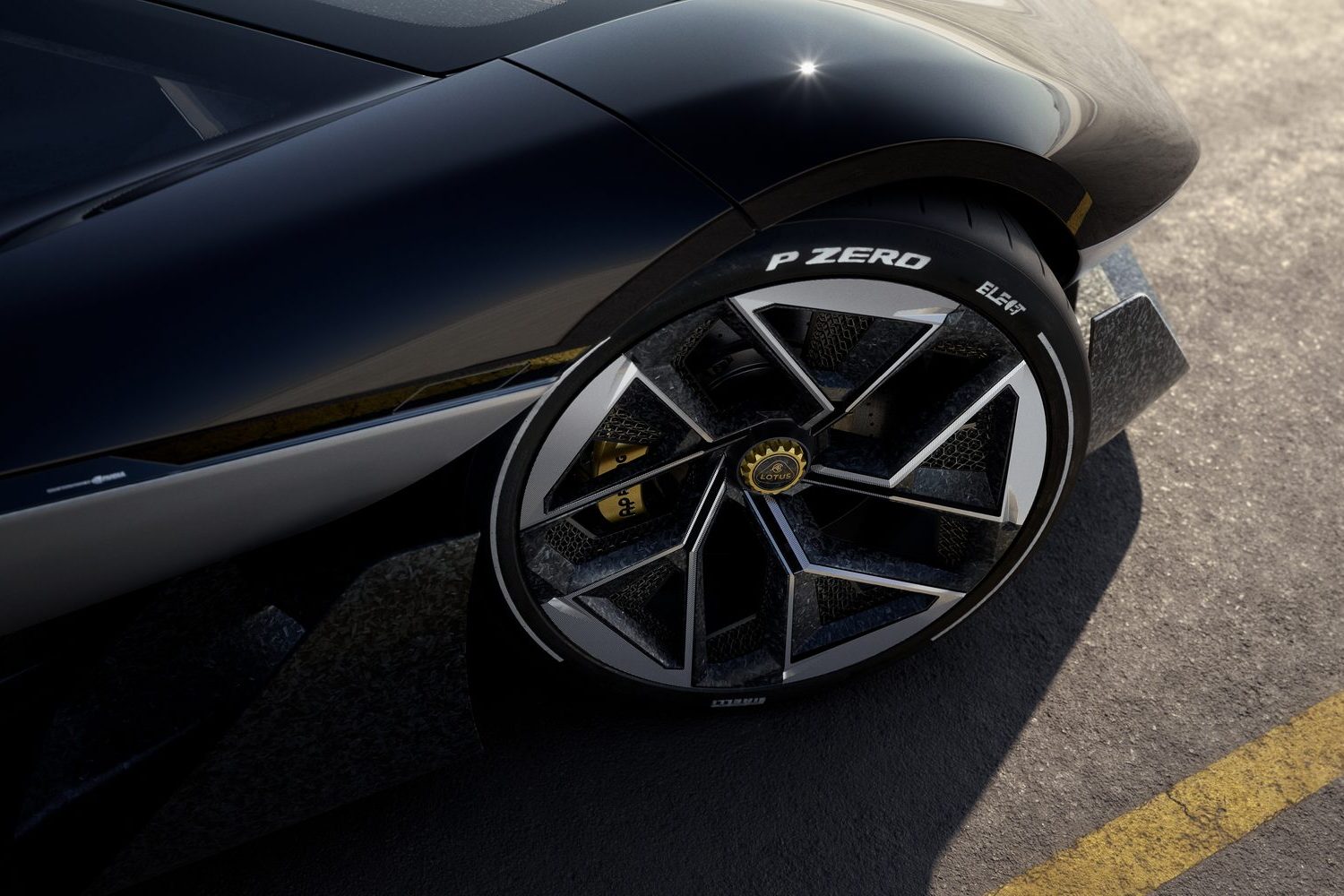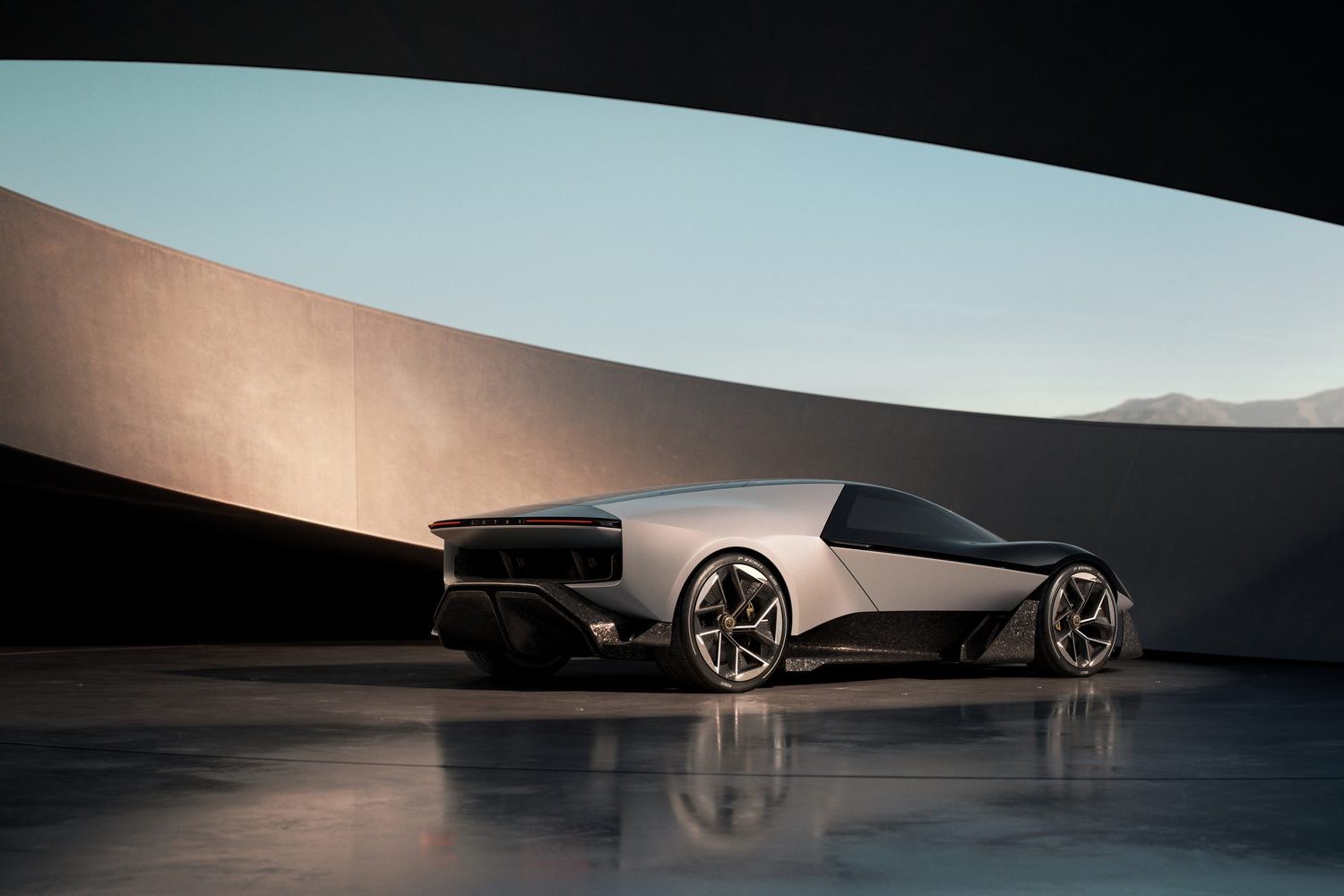This is the Lotus Theory 1 concept car, a vision into the company’s future production of electric vehicles (EVs) - and one which needs the occupants to wear fancy robotic clothes to get the best experience from it.
Right, start with the car itself...
The Theory 1 is powered by a 735kW (1,000hp) motor hooked up to a 70kWh battery pack. Sending its output to all four wheels, the Lotus EV can run 0-100km/h in less than 2.5 seconds and go on to a 320km/h top speed, yet it has enough battery capacity to - in theory - go up to 402km for each charge.
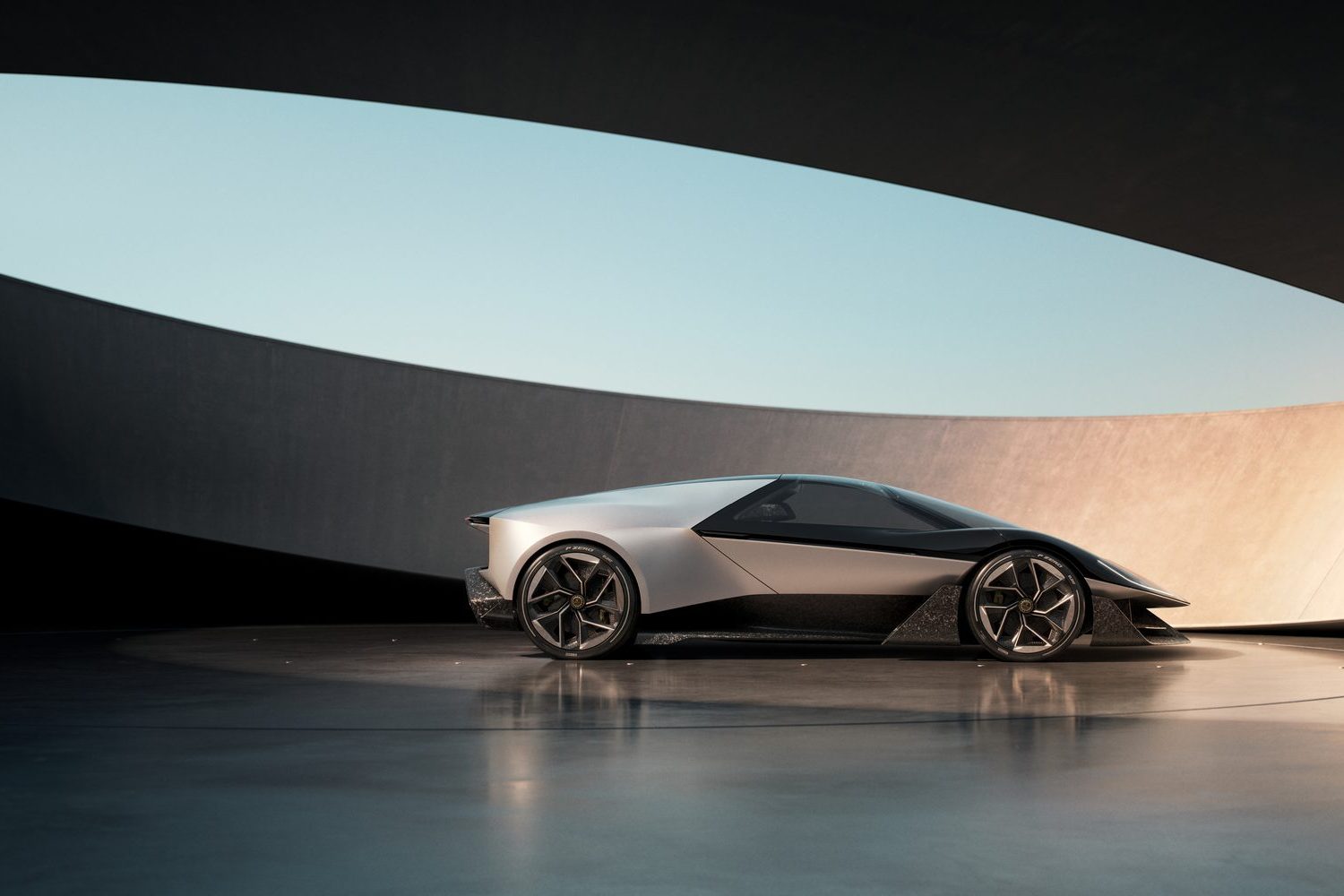
At around 4.5 metres long, two metres wide and just 1,140mm tall, Lotus has managed to keep the weight of this car down, speaking in EV-relative terms, and so it should come in at less than 1,600kg - mainly because its chassis ‘tub’ is made of recycled-chop carbon fibre, while the body is constructed of cellulose composite and polycarbonate. Even the windows of the Theory 1 are made of recycled glass.
Will the Theory 1 handle like a Lotus?
Hopefully so. With an active damping system coupled up to front and rear double-wishbone suspension, the Theory 1 aims to preserve Lotus’ fabled roadholding qualities despite the fact it’s an EV. It also has steer-by-wire, a set of Pirelli P-Zero Elect tyres on mismatched 20-inch front, 21-inch rear wheels, while the carbon-ceramic brakes with six-piston monobloc forged aluminium callipers are related to the set-ups in the existing Evija, Eletre and Emeya Lotus EVs already in production. Those Pirellis are supposed to be low-rolling resistance tyres, which use less energy and thus extend the battery range by around ten per cent, but they have enhanced grip to cope with the Lotus’ massive torque.
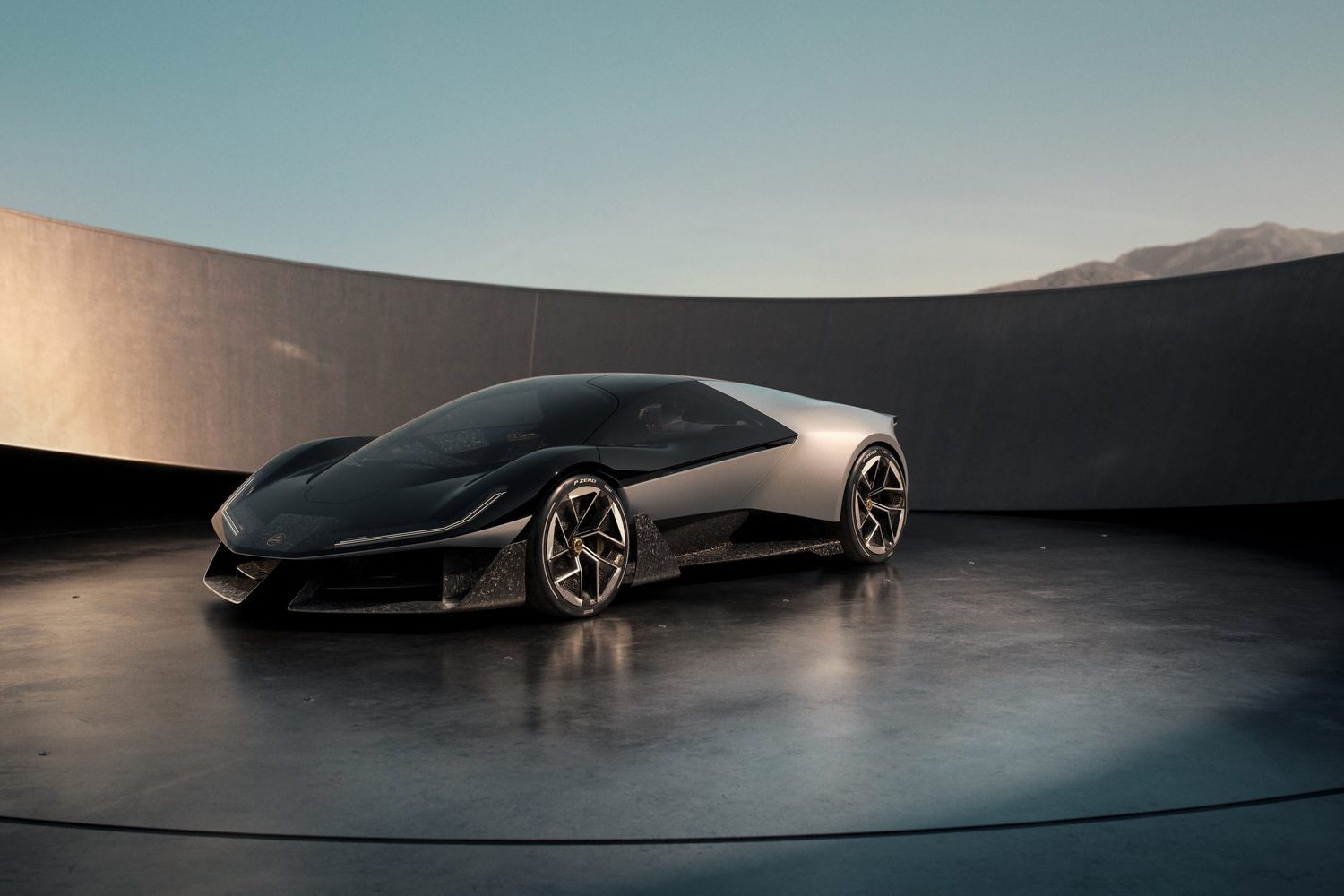
Other innovations include active and passive aerodynamics, including a rear spoiler mounted direct to the motor and suspension assembly - which means all the downforce acts directly on the suspension mounts itself to reduce both losses and frontal lift. The motor and battery assembly also forms a stressed member of the car, meaning there’s no need for a subframe, further reducing the Theory 1’s complexity and weight.
Can you talk to me about those doors?
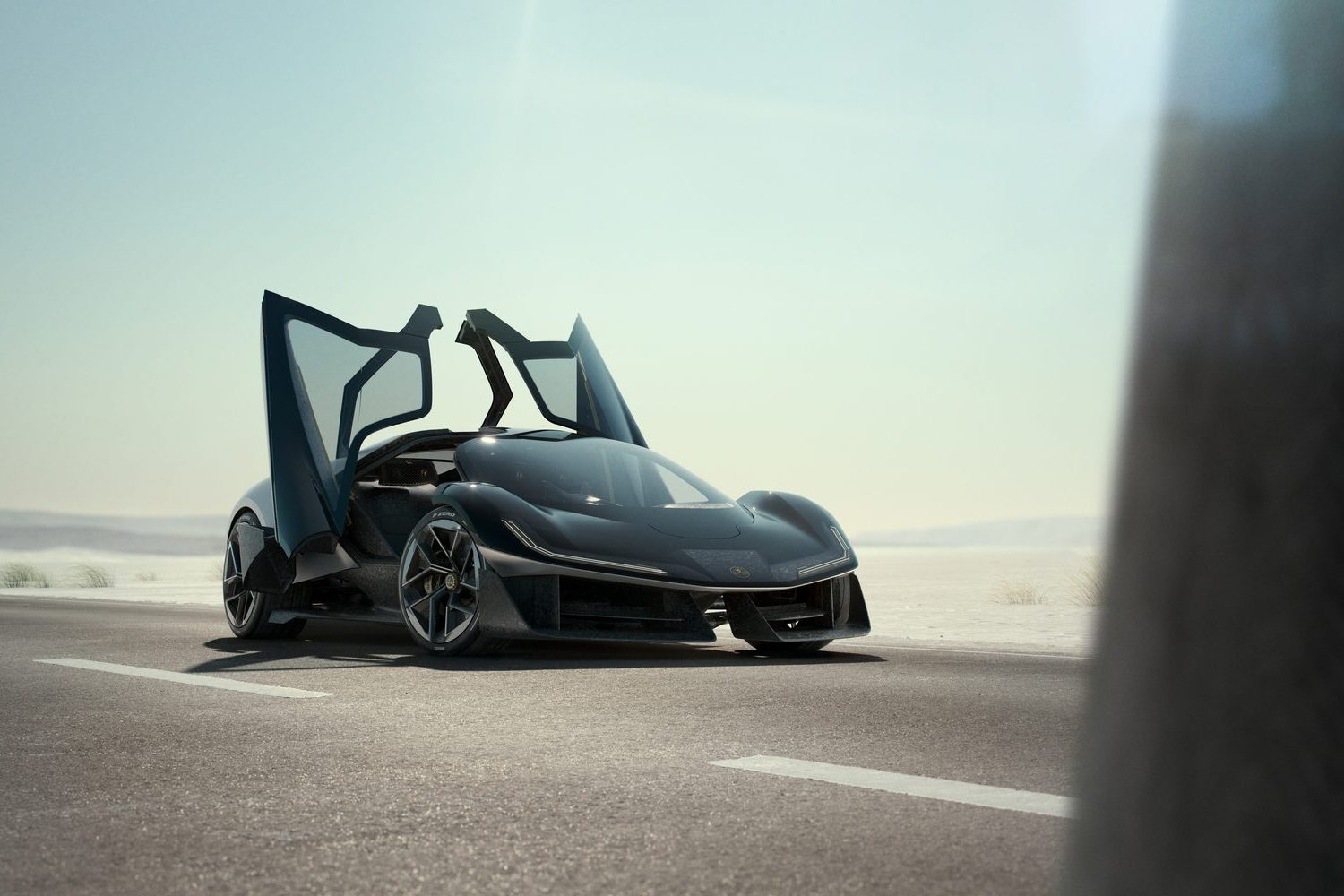
Unlike other Lotuses of recent yore, which were difficult to climb into and out of, the Theory 1 has been designed with easy ‘step-in’ access for all occupants. Of which there is room for three, by the way - this Lotus has a central driving position with two outer flanking passenger seats, which is supposedly inspired by Formula 1... and possibly the very road car which pioneered this cabin layout and shares the sport’s name, the McLaren F1. Anyway, those doors mean everyone can get into and out of the Theory 1 in a space just 2.4 metres wide - that means with as little as 20cm available each side of the car.
And what about these robosuits?
The company’s new design manifesto is ‘The Lotus Theory’, hence the name of the concept car, which is based around ‘Digital, Natural, Analogue’, resulting in DNA. The N in this case means human-centric design, while the D is an immersive, intelligent and intuitive experience. So, while the inside of the Theory 1 is shaped around the human body - the seats are integrated into the car’s structure, while the steering wheel and pedals all move towards the driver accordingly - you only will get the best from the vehicle by donning some Lotuswear.
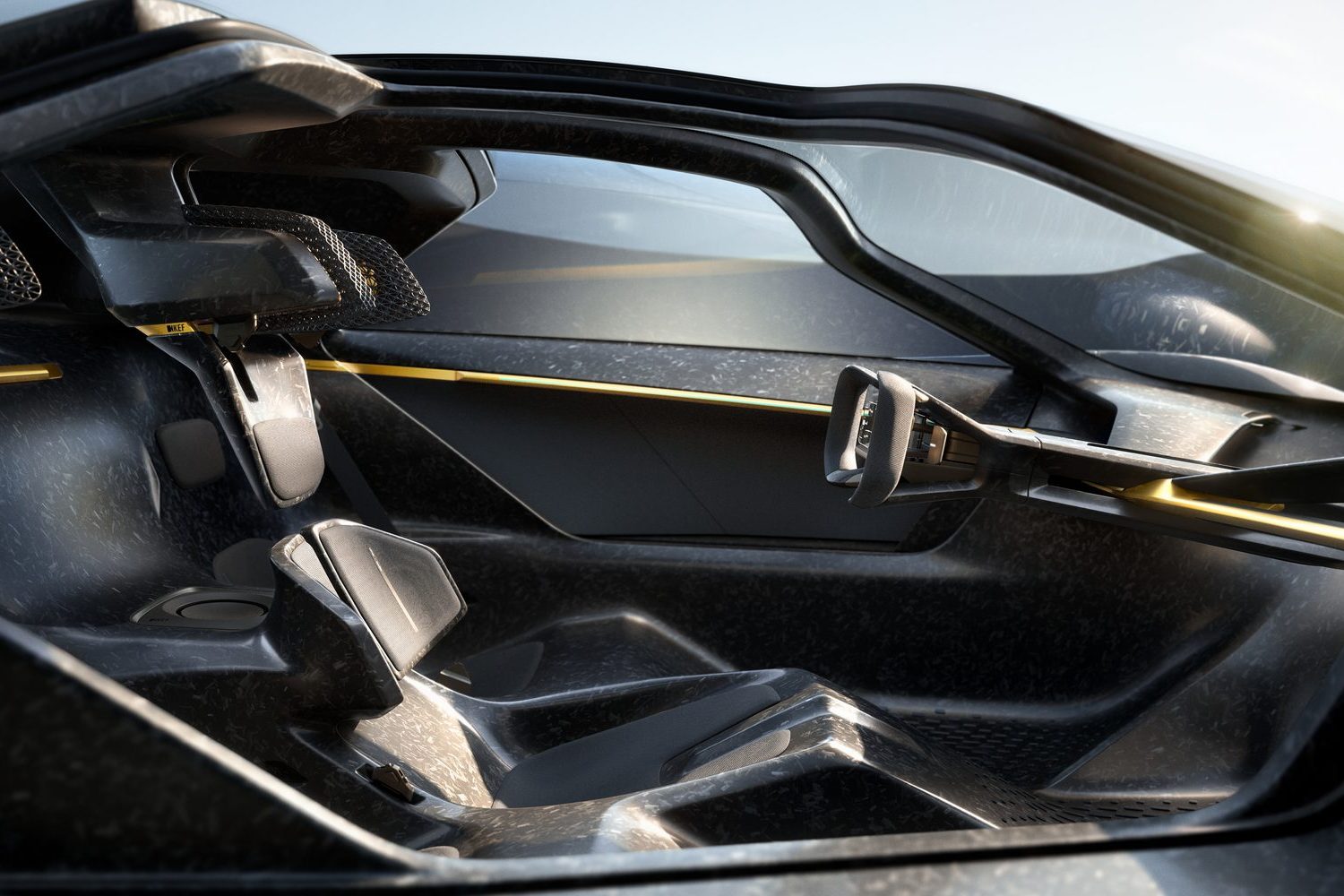
This is clothing made of an adaptive robotic textile material, which allows the car to communicate with driver and passengers via the means of inflatable pods on the seats and steering wheel that react in real-time to offer more support, grip and subtle prompts as personalised haptic feedback. This can include, for instance, pulses on the left and right sides of the wheel to let the driver know when to turn. Lotuswear was developed in conjunction with MotorSkins, which specialises in textile-bases wearable robotics.
It's more than just cyber-clothes inside the Theory 1, though, as the Kef sound system built into each of the carbon-fibre head restraints can deliver a ‘bespoke soundscape’ for each occupant, while OLED technology can display multiple functions of the vehicle’s status to all onboard.


